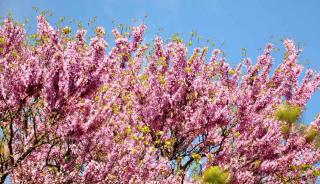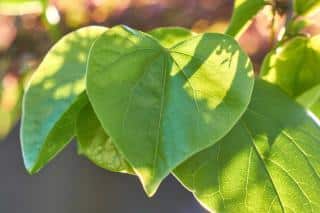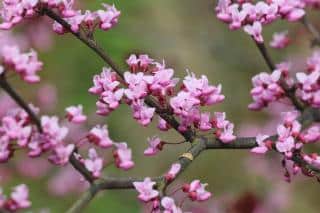

Judas tree is a small spring-blooming tree that is simply beautiful.
Key Judas tree facts:
Name – Cercis silliquastrum
Family – Fabaceae
Type – tree
Height – 20 to 25 feet (6 to 8 m)
Exposure – full sun or light shade
Soil – ordinary to limestone
Foliage: deciduous – Flowering: mid to late spring
Its purple pink flowers appear just before its leaves do, thus decorating your garden from April onwards.
Preferably in fall or winter as long as it doesn’t freeze.
It is quite sensitive to the soil type and prefers chalky or limestone soil. It hates acidic soil. It will also grow better in rich, deep soil.
Young Judas trees are said to be quite fragile during the first few years after planting.


During the first years, feel free to provide soil conditioner to the foot of the tree to ensure its growth and blooming.
According to the legend, this is the tree that Judas the apostle hung himself, it is found everywhere in Israel. That might be why that name stuck. But it might also simply come from the fact that it is native to Judea.

Native to Europe and Asia minor, you’ll find this tree appealing in spring of course with its fabulous flowering as you will in fall when it takes on luminous golden colors.
Lastly, note that it will stand out just as much whether it is planted as a standalone or paired with other trees. Planting it alone highlights its beautiful bearing, so that is worth doing if you’ve got space.
This tree inspired botanists when they discovered and named another tree species, Cercidiphyllum. Indeed, katsura tree also has leaves shaped like hearts!
The botanical name “Cercidiphyllum” translates into “leaves like those of Cercis”.
At the beginning, mulch around the trunk to keep it cool in summer and protect it from winter frost.
I have a clay soil can I still have one of these lovely trees or can I plant in a large pot
Hi Lloyd, you can of course go ahead and plant one in your garden! You’ll need to prepare the soil more extensively, though, since it’s clay. Here are the tips to make clay soil compatible with needs of plants that need more drainage.
What’s nice in your case is that typically, clay soil isn’t too acidic. The Judas tree can’t take acidic soil, it interferes with how nutrients are absorbed. Here is a practical guide on how to check your soil pH, if ever you have any doubts.
Cercis will grow fine in pots, too. If the soil pH is ok, it becomes a matter of preference for you whether you prefer a nice, large potted tree or an even larger one growing in the ground.
Does anyone know how far the roots of a Judas tree will travel, I have one five feet from my house and am concerned about root damage to the house.
Thank you
Hi, typically, roots will travel to a bit further than the drip line of the tree (the line where the shade at midday stands). So if your Judas tree spans 10 feet to either side, that’s also the minimum distance roots will reach. When you prune a tree, of course, it’ll go further than that.
The advantage of the Judas tree is that the root system is very shallow, never much deeper than a foot. Normally houses are built with a protection against root infiltration, but if that isn’t the case for yours, you have two courses of action:
– on one hand, you can schedule to dig up a trench along your wall every 3-5 years or so, a foot deep (30 cm), and chop up any roots you encounter. A spade is fine for this, typically you’d dig a first line out one spade deep, then go for a second run and remove another spade depth. There won’t be any roots deeper than a foot.
– on the other hand, you might want to do this work only once, and line the side of your wall with a rhizome barrier that’s at least a foot deep. This is an easy find in stores, it’s often sold near invasive bamboo plants.